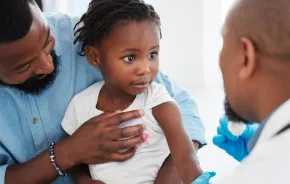 By Patti Skelton-McGougan, executive director of Youth Eastside Services.
By Patti Skelton-McGougan, executive director of Youth Eastside Services.
Disturbing YouTube videos, showing cutting and other self-injury methods, are drawing millions of views and have the potential to trigger troubled youth to copy the behaviors, a study warns.
Though the issue of self-harm has been surfacing for the past 20 years, the Internet has provided a new platform for promoting such behavior. In a recent study released by the Journal of Pediatrics, the top 100 videos were viewed over two million times and 80 percent were accessible to a general audience of any age.
This is a trend parents want to be alert to and be ready to discuss, especially if your child is exposed to the images, hears other kids talking about them, has a friend who is involved in self-harming behavior or if your child is at risk for self-harm.
“Young people who self-injure often inflict physical pain on themselves in order to cope with emotional pain they are struggling with. This behavior should not be ignored or taken lightly,” says Debbi Halela, director of youth and family counseling at Youth Eastside Services (YES).
Deliberate destruction of one’s body without suicidal intent occurs in up to 24 percent of youth and young adults, according to the Journal of Pediatrics. The most susceptible to this type of behavior are those who struggle with emotional distress.
Look for the triggers of low self-esteem, shame and self hatred, as well as trouble coping with strong emotions, especially sadness, fear and anger. Remember cutting is often used to relieve stress and/or depression.
Signs of self-injury include unexplained cuts, bruises, wounds and scars, especially in areas that are usually covered by clothing, like the stomach, upper arms and thighs. Kids will do their best to hide the evidence, often wearing long sleeves and pants even in hot weather.
If you discover your child is engaging is self-injury, don’t react with fear or anger or respond with punishments. It also won’t work to try to analyze or fix the problem. Your role is to listen, offer support and get your child professional help if the behavior persists.
“No one wants to see our children hurt. It’s even more upsetting to discover those cuts, bruises or burns were self-inflicted,” says Halela. A counselor trained in self-injury, like those at YES, can assess what’s behind your child’s actions and help them find healthier ways to cope.












